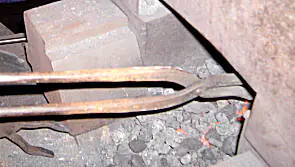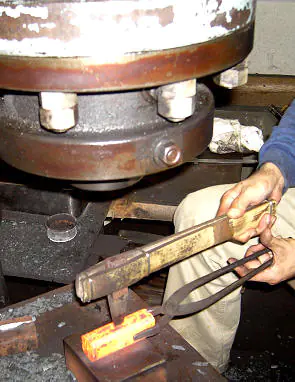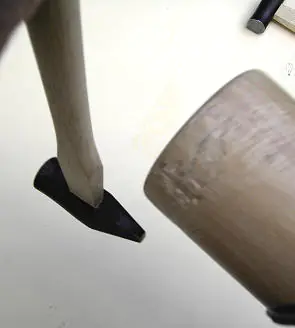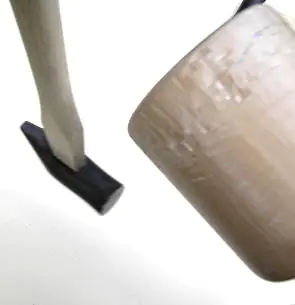Hand-forged Japanese square hammer by Master Hiroki
The hammers from Master Hiroki are traditionally handcrafted with great effort. They are perfectly balanced and of simple beauty.
In traditional Japan, carpenters were paid based on the number of completed wood joints. To work quickly, they needed perfectly balanced hammers. The art of making such hammers was largely forgotten until the 20th century when the master blacksmith Kozaburo Hasegawa revived it. Master Kozaburo passed away in 2004.
Blacksmith Master Aida Hiroki is heavily influenced by Master Kozaburo and is likely the only one who produces such excellently balanced hammers according to principles passed down over centuries. He sells them under the brand name Aitoyo. He calls his hammers "orthodox" hammers, according to their original meaning from Greek: the correct, straightforward teaching. This manifests his reverence for a traditional and proven method of production.
The production of a hammer head consists of many steps. The creation of the hole for the handle alone is very elaborate. First, a small hole is hammered into the heated head blank, which does not initially go all the way through, deforming the pre-forged head. Therefore, it must be repeatedly placed back in the forge to correct the shape. This process is repeated many times and requires a delicate touch and experience. Only visual estimation is used; no measurements are taken. If the hole is not perfectly centered at the beginning, the narrow side is briefly quenched with water, and then the hole is adjusted into the correct position with a few hammer strikes - and the shape is corrected again. A virtuoso handling of the heated material, as if a baker were shaping dough!
Care is taken to ensure that the hole has sharp inner corners so that the handle can hold better.
Through selective water hardening, the hardness decreases towards the inside and the center. This eliminates the risk of the head breaking and reduces the strain on the wrist, as the impact load does not continue with full intensity to the end of the handle. The hammer head is not laminated; it is made entirely of hard carbon steel! Hiroki Aida sells these hammers under his brand name AITOYO.
A small look into the workshop



Note on setting up
Master Hiroki believes that a precise adjustment of the handle makes a wedge unnecessary. If you follow his "orthodox" advice, you do so at your own risk!






